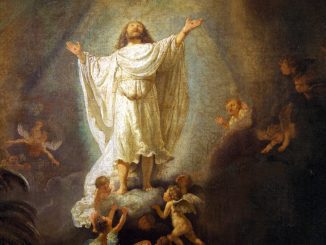
This week we continue the annual tradition of examining the hymns that deepen the spirit of Christmas. The jubilant carol, “Angels We Have Heard on High,” a timeless hymn that echoes the heavenly proclamation of Jesus’ birth and invites believers to join in the angelic chorus glorifying God.
The origins of “Angels We Have Heard on High” trace back to 18th-century France, where it was known as Les Anges dans nos campagnes (Angels in our countryside). This hymn, initially a traditional carol sung during Christmas masses, captures the shepherds’ awe and the angels’ praise as described in Luke 2:8-14. The carol gained prominence when it was translated into English in 1862 by James Chadwick, a Roman Catholic bishop. Chadwick’s translation retained the joyful essence of the original while making it accessible to English-speaking congregations.
The most iconic feature of the hymn is its refrain: “Gloria in excelsis Deo” — Latin for “Glory to God in the highest.” This phrase recalls the angelic praise in Luke 2:13-14, emphasizing the glory and peace brought by the birth of Christ. “And suddenly there was with the angel a multitude of the heavenly host praising God, and saying, Glory to God in the highest, and on earth peace, good will toward men.”
The verses recount the shepherds’ experience on the night of Jesus’ birth. The humble witnesses to the divine announcement reflect an important biblical theme, highlighting God’s choice to reveal His glory to the lowly and marginalized. The carol invites listeners to imagine the scene: the open fields under a starlit sky, the sudden appearance of angels, and the shepherds’ amazement as they hurried to Bethlehem to find the Christ child. The second verse invites us to “Come to Bethlehem and see, Him whose birth the angels sing” and the short hymn ends as we “See Him in a manger laid, Whom the choirs of angels praise.”
Singing this hymn allows all believers to join in the heavenly chorus, reflecting the universal call to worship the newborn Christ.
The tune most commonly associated with “Angels We Have Heard on High” is known as Gloria and is believed to have been adapted from an older French folk song. This melody’s cascading notes in the refrain mimic the sound of angelic voices, enhancing the hymn’s celestial theme. The broad appeal of the song has led to countless arrangements across genres.
In the United Kingdom, the song “Angels from the Realms of Glory” by James Montgomery is also typically paired with the “Gloria” tune. Montgomery’s lyric “Come and worship Christ the new-born King” is often replaced with the “Gloria in excelsis Deo” refrain to create a hybrid song known as Iris” for the name of Montgomery’s newspaper where his original song was first published.
As we light the second candle of Advent, symbolizing peace, “Angels We Have Heard on High” reminds us of the profound peace the birth of Jesus brings to a troubled world. The angels’ song is not just an ancient proclamation but a timeless invitation to glorify God and find peace through Christ. In a season often overshadowed by worldly distractions, this hymn calls us back to the heart of Christmas: the worship of Jesus, the Savior.
To celebrate this beloved carol, North State Journal has added several renditions of “Angels We Have Heard on High” to our Christmas Spotify playlist along with “Angels from the Realms of Glory.”



